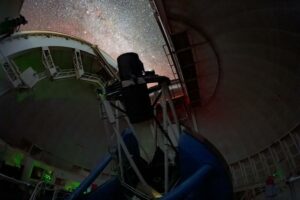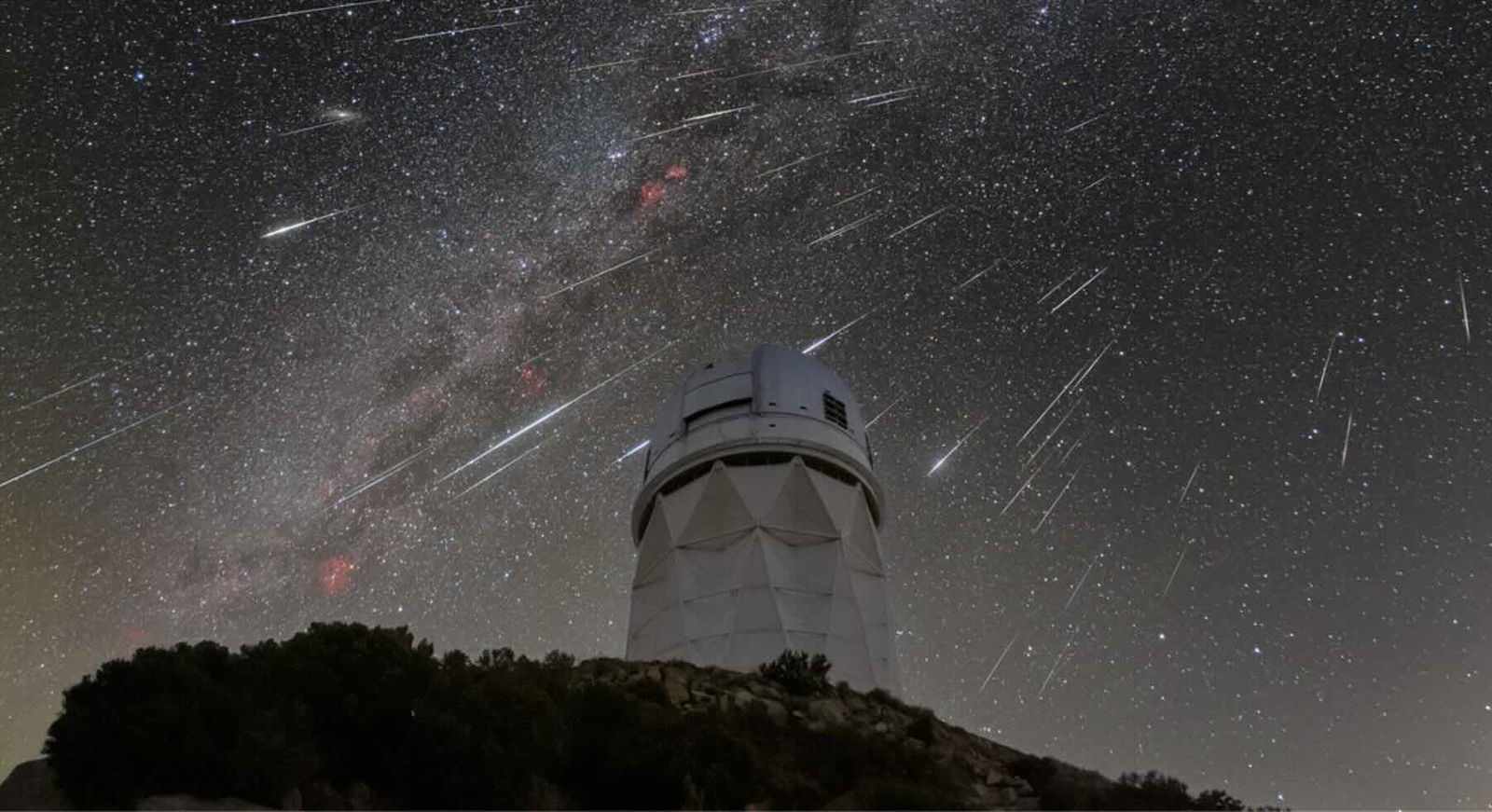A series of studies by researchers from the Department of Energy-funded Lawrence Berkley National Laboratory (Berkley Lab) report overwhelming evidence that the expansion of the universe is behaving as Albert Einstein predicted in his theory of general relativity.
Alternate theories of gravity aim to explain conflicting measurements in the universe’s expansion spotted in previous studies, a variance sometimes called the Hubble Tension, without the presence of dark matter or dark energy required by Einstein’s theory. However, the Berkley Lab effort found evidence for dark matter and its expected effects on the universe’s expansion that match the scientist’s 100-year-old predictions.
“General relativity has been very well tested at the scale of solar systems, but we also needed to test that our assumption works at much larger scales,” said Pauline Zarrouk, a cosmologist at the French National Center for Scientific Research (CNRS) working at the Laboratory of Nuclear and High-Energy Physics (LPNHE), who co-led the new analysis. “Studying the rate at which galaxies formed lets us directly test our theories and, so far, we’re lining up with what general relativity predicts at cosmological scales.”
Scan of 6 Million Galaxies & Quasars Refutes Alternate Theories of Gravity
The research employed a cutting-edge instrument designed to measure and characterize galaxies, the Dark Energy Spectroscopic Instrument (DESI). Operated by the Berkley Lab, DESI is an international effort of over 900 researchers from 70 institutions around the world that can capture light from 5,000 galaxies simultaneously.


In a previous study, DESI researchers looked at data from nearly 6 million galaxies and quasars scanned during DESI’s first year of operation. This dataset allowed the team to study the expansion of the universe starting around 11 million years ago. The results of that effort, which measured baryon acoustic oscillations (BAO) to make the most accurate 3D map of the universe to date, were published in April.
According to the current study’s authors, hints from the original study indicated that dark energy not only existed but may be evolving. The researchers say their latest effort expands on those results by completing a “full-shape analysis” of the universe that shows the cosmic structure evolving just as Einstein predicted.
“Both our BAO results and the full-shape analysis are spectacular,” said Dragan Huterer, professor at the University of Michigan and co-lead of DESI’s group interpreting the cosmological data. “This is the first time that DESI has looked at the growth of cosmic structure.”
BY affirming Einstein, the study’s results also offered measurable constraints that directly refute several alternate theories of gravity. Other recent studies have seemed to offer support for one of those theories first proposed in 1998, modified Newtonian Dynamics (MOND), which could explain the expansion of the universe without the need for dark matter or dark energy and resolve the Hubble Tension. Other recent studies relying on data from the James Webb Space Telescope could also help resolve the Hubble Tension without violating general relativity.
The Weight of Neutrinos and Other Big Fundamental Questions in Cosmology
In addition to offering strong evidence supporting general relativity and evidence refuting alternate theories of gravity, the new study also provided a critical restraint for the weight of neutrinos. Previous efforts had set the lower limit of the only particle whose mass has yet to be accurately calculated. The new study set an upper limit that is exceptionally close to the lower limit, creating a tiny window for the weight of a neutrino to fall.
“Previous neutrino experiments found that the sum of the masses of the three types of neutrinos should be at least 0.059 eV/c2,” the press release explains. “DESI’s results indicate that the sum should be less than 0.071 eV/c2, leaving a narrow window for neutrino masses.”
Although the new study explored data from nearly 6 million galaxies captured during the project’s first year, the researchers at DESI say they are just getting started. Now in its fourth year of a five-year mission, the team hopes to complete a scan of roughly 40 million galaxies and quasars by the project’s end.
Until then, the team is analyzing the data from the first three years of scans to explore the mysterious nature of dark energy and its effects on the universe’s expansion. These results are scheduled to be released in spring 2025.
“Dark matter makes up about a quarter of the universe, and dark energy makes up another 70 percent, and we don’t really know what either one is,” said Mark Maus, a PhD student at Berkeley Lab and UC Berkeley who worked on theory and validation modeling pipelines for the new analysis. “The idea that we can take pictures of the universe and tackle these big, fundamental questions is mind-blowing.”
“We’re showing a tremendous new ability to probe modified gravity and improve constraints on models of dark energy,” Huterer added. “And it’s only the tip of the iceberg.”
The DESI team’s three papers “DESI 2024 II: Sample Definitions, Characteristics, and Two-point Clustering Statistics, DESI 2024 V: Full-Shape Galaxy Clustering from Galaxies and Quasars, and DESI 2024 VII: Cosmological Constraints from the Full-Shape Modeling of Clustering Measurements” were published on November 19, 2024.
Christopher Plain is a Science Fiction and Fantasy novelist and Head Science Writer at The Debrief. Follow and connect with him on X, learn about his books at plainfiction.com, or email him directly at christopher@thedebrief.org.

